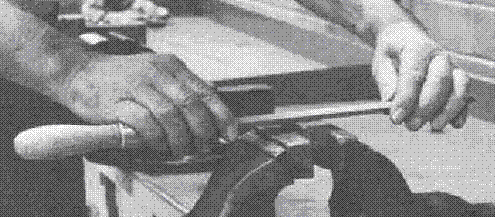|
Filing
“Files are used for shaving, smoothing and fitting metal
parts, and for basic sharpening, such as with axes and
lawnmower blades.
For most
basic metalwork, a double-cut machine file and a
single-cut mill file will work. They are available in
four levels of coarseness: coarse, bastard, second and
smooth cut. Mill files leave a smoother finish than
machine files but cut more slowly.
A double-cut
file has two rows of teeth for coarse cutting. The
single-cut file has a single row of teeth and cuts
smoothly.
The beauty of
this tool is that it’s very long-wearing and can be used
in a back-and-forth or even a circular motion.
For typical
cross filing, grip the file with one hand on the handle
and the other hand on the point. Stroke the file forward
across the work piece at a shallow angle. Apply pressure
on the forward stroke and lift the file clear of the
work on the return stroke.
Draw filing
is done when a smooth, polished finish is desired. Use a
single-cut file gripped as shown. 
Push and
pull the file at a right angle to the work piece.”

|











